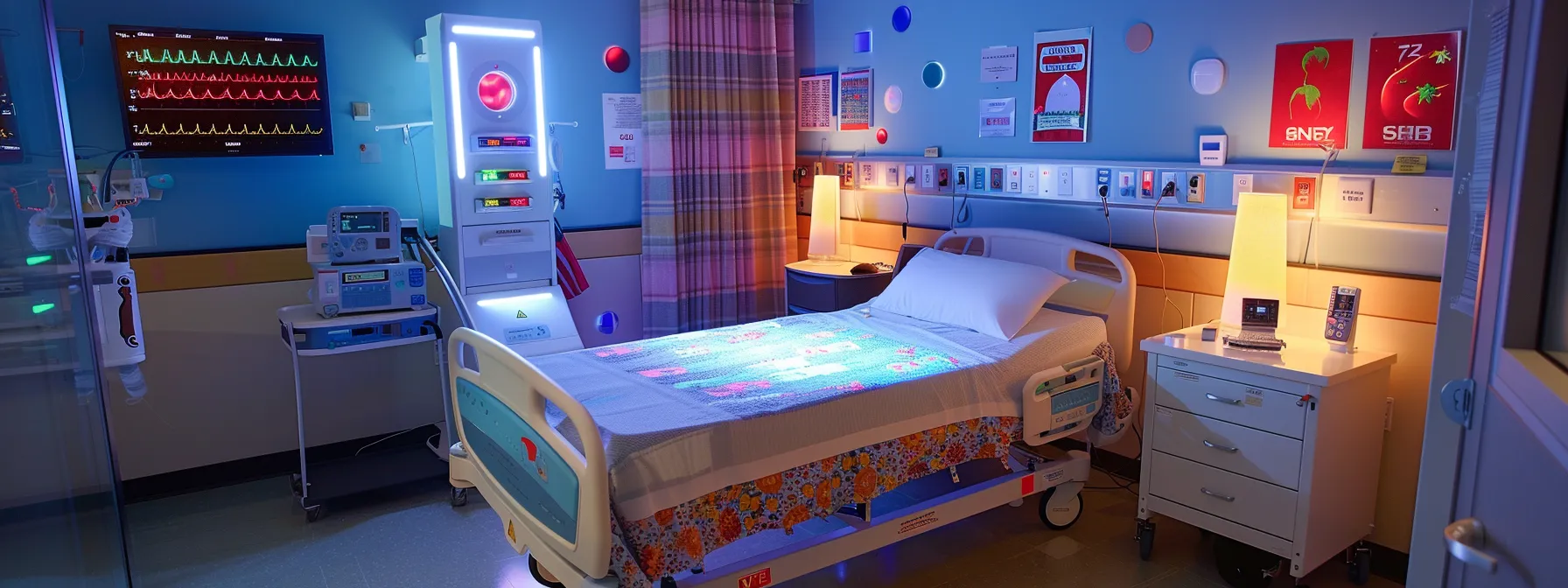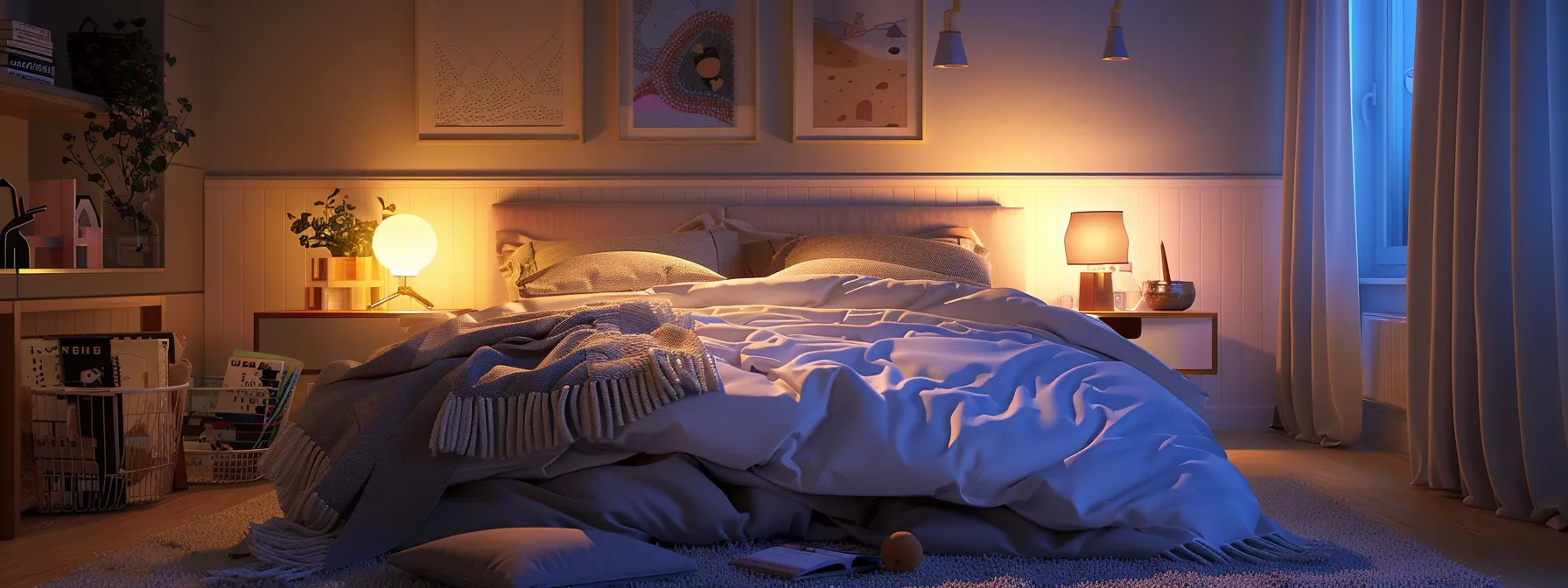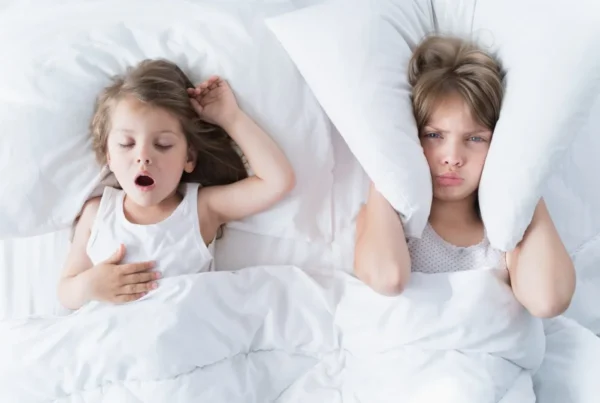Are you worried about your child’s sleep habits? Many parents don’t realize that sleep disorders in children can lead to behavioral issues and difficulties in school. In this post, readers will learn how to recognize common symptoms of sleep disorders, explore the types that can affect kids, and understand when to seek professional help. By engaging with this content, parents will gain the knowledge needed to identify potential sleep problems early and find effective solutions, ensuring their children get the rest they need for healthier, happier lives.
Key Takeaways
- Sleep disorders in children can result from various factors, including emotional stress and medical conditions
- Persistent nightmares or day sleepiness may indicate a need for professional help
- Keeping a sleep diary can reveal patterns that help identify sleep disturbances
- Establishing a calming bedtime routine can significantly improve a child’s sleep quality
- Consulting dental professionals can be beneficial, as dental issues may impact sleep health
Understanding Sleep Disorders in Children
Sleep disorders in children can show up in various ways, often manifesting as difficulties in falling or staying asleep. Common issues include having nightmares, which can trigger fear and disrupt nighttime peace. Parents and caregivers should pay attention to sleep patterns as these can indicate underlying problems that need evaluation.
Various factors contribute to these sleep challenges, including emotional stress, medical conditions, or even disruptions in daily routines. Sometimes, issues with sleep can relate to tissue growth and development stages, which can affect how a child sleeps. Recognizing these factors early on is essential for effective management. If necessary, request appointment with a specialist.
If a child frequently experiences nightmares or other sleep disturbances, it might be time to consult professionals. An evaluation can help identify the root causes, whether they arise from anxiety or other health concerns. Consulting a burlington dentist may also be valuable, as dental health can sometimes impact sleep quality and contribute to nighttime issues.
Recognizing Common Symptoms of Sleep Disorders

Behavioral indicators of sleep disturbances can be seen in children through issues like irritability and difficulty concentrating. Physical signs, such as yawning or dark circles under the eyes, may suggest sleep deprivation. Emotional responses, including anxiety or mood swings, can also be linked to poor sleep hygiene. Understanding these symptoms is crucial in addressing potential sleep issues since they can impact overall health, including links to conditions like type 2 diabetes.
Moreover, factors like caffeine consumption or throat-related problems can significantly affect sleep quality. Recognizing these signs early can help caregivers take appropriate action to improve their child’s sleep patterns.
Behavioral Indicators of Sleep Disturbances
Behavioral indicators of sleep disturbances in children can include episodes of sleepwalking, which might surprise caregivers when discovered. The prevalence of sleep disorders often leads to noticeable changes in a child’s mood or behavior, such as irritability or difficulty focusing during the day. Keeping a sleep diary can be beneficial; it allows parents to track patterns and potential triggers related to sleep, providing valuable insights that can be shared during consultations with healthcare professionals.
Physical Signs That May Signal a Sleep Issue
Physical signs that indicate a sleep issue in children can include yawning frequently during the day, dark circles under the eyes, or appearing unusually tired. These symptoms may suggest that the child is not getting sufficient rest, impacting their cognition and ability to focus in school. Parents should take note of any consistent signs of discomfort, as they may lead to greater issues like hypertension or the need for medication to address any underlying concerns.
Emotional Responses Linked to Sleep Disorders
Emotional responses can manifest in children experiencing sleep disorders, often leading to feelings of anxiety or irritability. For instance, night terrors may cause an infant to exhibit extreme fear, impacting their ability to relax during sleep. By reviewing the child’s medical history and consulting with a pulmonology expert, caregivers can uncover any underlying issues that could potentially contribute to these emotional reactions.
Types of Sleep Disorders Affecting Children

Understanding different sleep disorders affecting children is essential for parents seeking to improve their child’s sleep quality. This section covers various conditions: insomnia, which disrupts restful nights; obstructive sleep apnea, characterized by breathing difficulties; sleepwalking and its potential risks; the frightening effects of night terrors and nightmares; and restless legs syndrome, which can cause discomfort and disrupt sleep. Each topic offers valuable insights into the challenges children face in the bedroom, guiding parents in recognizing symptoms and seeking appropriate remedies.
Overview of Insomnia in Young Ones
Insomnia in young ones can present challenges that go beyond simple bedtime resistance. This sleep disorder often manifests in difficulty falling asleep or staying asleep, which can lead to increased irritation during the day and issues with attention. Practicing good sleep hygiene, like maintaining a consistent sleep rhythm, is vital in addressing insomnia, helping children achieve better rest and reducing feelings of hypersomnia, where they might feel excessively tired despite adequate sleep hours.
Identifying Obstructive Sleep Apnea Symptoms
Identifying obstructive sleep apnea symptoms in children is crucial for ensuring their well-being. Parents should look out for signs such as loud snoring, gasping or choking during sleep, and excessive daytime sleepiness, which can all disrupt the child’s circadian rhythm. If these symptoms arise, it is wise to consult a health professional who can properly evaluate the situation and suggest potential solutions, such as using a CPAP mask for treatment.
- Loud snoring during sleep
- Gasping or choking sounds
- Excessive daytime fatigue
- Difficulty concentrating
- Restlessness during sleep, including leg movements
Exploring Sleepwalking and Its Implications
Sleepwalking is a fascinating yet concerning sleep disorder that can affect children, often leading to potential injuries during episodes. As kids wander through their environment in a state of wakefulness, parents may worry about safety, particularly if the sleepwalker encounters stairs or other hazards. If sleepwalking persists, consulting a physician could be beneficial to rule out conditions like restless legs syndrome or issues with oxygen levels during sleep, ensuring that any underlying problems are addressed for the child’s well-being.
Recognizing Night Terrors and Nightmares
Recognizing night terrors and nightmares in children involves observing their behavior during sleep disturbances. Night terrors often lead to sudden arousal, where a child may wake up in panic, racing heart rate, and confusion, leaving caregivers feeling concerned and unsure of how to help. On the other hand, nightmares can cause fatigue the next day as children may wake up upset or fearful, needing reassurance from a caregiver to settle back down. Understanding these differences is essential for parents to provide the right support and create a calming bedtime routine.
Understanding Restless Legs Syndrome
Restless Legs Syndrome (RLS) in children can create significant disruptions to their sleep patterns. It often manifests as a compelling urge to move the legs, especially when the child is at rest, which can lead to challenges at bedtime and even during exams when focus is crucial. Parents should be vigilant for signs of RLS as failure to thrive may occur if sleep disturbances persist, impacting overall well-being. Meditation and relaxation techniques prior to bedtime might help provide relief and support a healthier sleep routine for children facing these struggles:
Diagnostic Approaches for Sleep Disorders in Children

Evaluating sleep disorders in children involves several essential diagnostic approaches. First, a thorough sleep history evaluation helps identify patterns and issues related to bedtime habits. Incorporating sleep diaries can provide insights into nightly behaviors. Polysomnography is key for assessing breathing patterns and detecting potential problems, such as heart failure. Lastly, recognizing coexisting conditions ensures a comprehensive understanding of the child’s sleep health.
Importance of Sleep History Evaluation
A thorough sleep history evaluation is essential for identifying sleep disorders in children, as highlighted by the American Academy of Pediatrics. This evaluation helps uncover patterns, including episodes of parasomnia, where behaviors during sleep can cause disruption. It’s also important to note factors like stress or nutritional deficiencies, such as low iron levels, which can impact sleep quality and affect stages of rapid eye movement sleep. By gathering this information, parents and caregivers can work with healthcare professionals to pinpoint issues and create effective solutions tailored to their child’s needs.
Incorporating Sleep Diaries in Diagnosis
Incorporating sleep diaries can significantly aid in diagnosing sleep disorders in children. By tracking sleep patterns, caregivers can identify behaviors that may contribute to irritability or restlessness. According to the National Sleep Foundation, these logs act like sensors, revealing details about sleep duration, bedtime routines, and nighttime awakenings, which can help healthcare providers assess risks and tailor effective solutions that promote relaxation and better sleep hygiene.
The Role of Polysomnography in Assessment
Polysomnography plays a vital role in assessing sleep disorders in children by providing detailed insights into their sleep patterns and behaviors. This comprehensive sleep study monitors various parameters, including brain activity and pressure levels in the airway, enabling healthcare professionals to identify abnormalities. By combining data from polysomnography with a physical examination and discussions about the child’s memory and behaviors, caregivers can make informed decisions on treatment approaches tailored to each child’s needs.
Identifying Coexisting Conditions
Identifying coexisting conditions is crucial when evaluating sleep disorders in children. Issues like snoring can indicate obstructive sleep apnea, which may also relate to impacts on the central nervous system and overall mood. Additionally, assessing levels of physical activity can help pinpoint potential behavioral concerns that influence sleep quality, guiding families toward effective treatments, such as positive airway pressure therapy if necessary.
Effective Solutions for Managing Sleep Disorders

Managing sleep disorders in children involves a combination of behavioral and cognitive strategies that can promote better rest. Exploring medical interventions and treatments may also provide necessary support. The guidance from pediatric sleep coaching can help establish effective routines, while creating a sleep-friendly environment is essential for encouraging restful nights. Each of these approaches contributes to improving sleep quality and overall well-being in children.
Behavioral and Cognitive Strategies for Improvement
To effectively tackle sleep disorders in children, implementing behavioral and cognitive strategies can be a game-changer. Establishing a consistent bedtime routine that includes winding down with calming activities, like reading or listening to soothing music, helps signal to the child that it’s time to sleep. Additionally, cognitive techniques, such as addressing any fears surrounding nighttime or providing reassurance when they wake up from nightmares, can create a sense of security that promotes better sleep habits.
Medical Interventions and Treatments Available
When kids struggle with sleep disorders, medical interventions might be necessary to help restore their restful nights. Treatments can range from lifestyle changes, such as improving sleep hygiene, to the use of devices like a CPAP machine for obstructive sleep apnea. Collaborating with healthcare professionals can lead to personalized treatment plans that address each child’s unique needs, ensuring they get the quality sleep essential for their growth and development.
Role of Pediatric Sleep Coaching
Pediatric sleep coaching offers a structured approach for addressing sleep disorders in children. Coaches work with families to create tailored sleep plans, helping establish healthy bedtime routines that promote better sleep quality. By focusing on personalized strategies and reassurance, caregivers can effectively tackle nighttime challenges, leading to improved overall well-being for their little ones.
- Creating a consistent bedtime routine
- Addressing nighttime fears and anxieties
- Personalizing sleep strategies for each child
Creating a Sleep-Friendly Environment
Creating a sleep-friendly environment is key to helping children get the rest they need and can make a significant difference in managing sleep disorders. Parents can start by ensuring the bedroom is quiet, dark, and at a comfortable temperature, which can foster relaxation and make it easier for a child to fall asleep. Incorporating calming bedtime rituals, such as reading a book or playing soft music, further establishes a peaceful atmosphere that encourages a good night’s sleep.
When to Seek Professional Help for Sleep Disorders

Recognizing when a child needs medical advice for sleep disorders is vital for their overall health. Signs indicating the need for help include persistent nightmares or excessive daytime sleepiness. During a consultation, parents can expect a thorough evaluation of the child’s sleep patterns. It’s also important to prepare questions for the pediatrician to address specific concerns and get tailored guidance.
These discussions can provide clarity on navigating sleep disturbances effectively, ensuring children receive the support they need for better sleep quality.
Signs Indicating the Need for Medical Advice
When it comes to sleep disorders in children, recognizing the right time to seek professional help is crucial. Signs that indicate a child may need medical advice include persistent nightmares, excessive daytime sleepiness, or difficulty concentrating at school. Paying attention to these symptoms can lead to better sleep quality and overall health for the child:
- Persistent nightmares or night terrors
- Excessive daytime fatigue
- Difficulty concentrating or being irritable at school
- Loud snoring or gasping during sleep
What to Expect During a Consultation
During a consultation for sleep disorders in children, caregivers can expect a thorough discussion about the child’s sleep habits and any concerning symptoms. The healthcare provider may ask specific questions about bedtime routines, nighttime awakenings, and emotional responses, helping to identify patterns that contribute to sleep issues. By sharing insights and observations, caregivers can work together with the professional to develop a tailored strategy to enhance the child’s sleep quality and overall well-being.
Questions to Ask Your Pediatrician
When discussing sleep disorders with a pediatrician, caregivers should aim to ask specific questions that can lead to effective solutions. For instance, it’s helpful to inquire about the child’s sleep patterns and whether any behavioral changes are observed at home or school. Additionally, asking about potential treatments and strategies for improving sleep hygiene can provide valuable insights tailored to the child’s specific needs.
Resources for Parents on Child Sleep Disorders
Parents looking to identify sleep disorders in their children can benefit from various resources. Recommended books and guides offer practical insights into sleep issues, while online support communities provide a platform for sharing experiences and advice. Accessing professional care and expertise is crucial for accurate assessments, and educational workshops on child sleep health can further empower parents with knowledge.
Recommended Books and Guides
For parents looking to identify sleep disorders in their children, several recommended books and guides can offer practical insights and actionable strategies. Titles like “Solve Your Child’s Sleep Problems” by Dr. Richard Ferber provide a comprehensive approach to understanding sleep issues and improving sleep hygiene. Additionally, “The Sleep Workbook for Kids” includes engaging activities designed to help children develop better sleep habits, making them valuable resources in navigating sleep challenges and fostering better overall health.
Online Support Communities
Online support communities for parents dealing with child sleep disorders can be invaluable resources. These platforms allow caregivers to connect with others facing similar challenges, fostering a sense of understanding and shared experiences. Participating in these groups can provide practical tips, emotional support, and insights into varying approaches for handling sleep issues, making them essential for navigating the complexities of children’s sleep health.
Accessing Professional Care and Expertise
Accessing professional care and expertise is an essential step for parents who suspect their child may have a sleep disorder. Seeking guidance from pediatricians, sleep specialists, or child psychologists can provide valuable insights and tailored solutions to improve sleep quality. These experts can help identify underlying issues, suggest appropriate treatments, and offer guidance on creating effective bedtime routines that support healthier sleep habits for children.
- Consult pediatricians for initial evaluations.
- Seek referrals to sleep specialists for targeted assessments.
- Explore resources like sleep studies for detailed insights.
- Engage with child psychologists if emotional factors are suspected.
Educational Workshops on Child Sleep Health
Educational workshops on child sleep health offer parents the opportunity to gain valuable insights into sleep disorders affecting their children. These sessions often cover essential topics like recognizing the signs of sleep issues and effective sleep hygiene practices. By participating, caregivers can learn practical strategies and tips to create a better sleep environment, ultimately supporting their child’s overall well-being.
Conclusion
Identifying sleep disorders in children is crucial for their overall health and development. Recognizing behavioral, physical, and emotional signs can lead to timely interventions that improve sleep quality. Caregivers should seek professional advice when persistent issues arise to create effective strategies tailored to each child’s needs. Understanding these challenges empowers parents to support their child’s well-being, ensuring they receive the restful sleep necessary for growth and happiness.
At The Burlington Dentist, we know that you want to be someone who can breathe clearly and live without the constant burden of allergy symptoms. In order to do that, you need an optimized airway that functions properly despite allergic reactions. The problem is that chronic allergies silently reshape your airways, which makes you feel constantly congested, exhausted, and frustrated with persistent breathing difficulties.
We believe everyone deserves to breathe freely without letting allergies control their life. We understand how chronic allergies can impact every aspect of your daily activities and sleep quality, which is why Dr. Bethaney B. Brenner has developed a comprehensive approach that addresses both allergy symptoms and airway health.
Book Your Consultation Today!
Dr. Bethaney B. Brenner DMD
8 Milford St, Burlington, CT 06013
Related Articles
Sleep Apnea Symptoms in Children, Signs of Child Sleep Apnea, Identify Sleep Disorders in Children, The Importance of Sleep Studies, Kids Airway Quiz, Pediatric Sleep Apnea, Allergies and Airway, Crooked Teeth and Airway, Bedwetting and Airway, ADHD and Airway, The Vivos Treatment, Sleep Apnea 101





